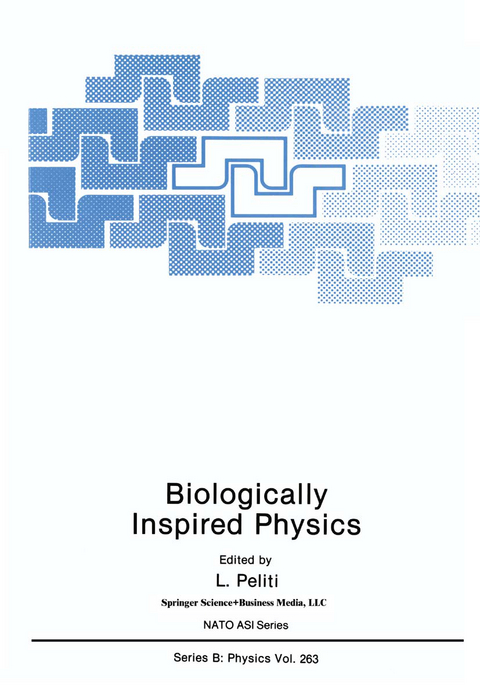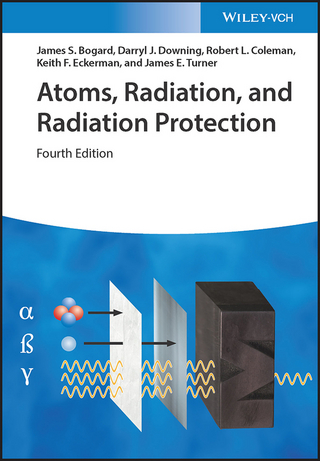
Biologically Inspired Physics
Springer-Verlag New York Inc.
978-1-4757-9485-4 (ISBN)
The workshop "Biologically Inspired Physics" was organized, with the support of the NATO Scientific Affairs Division and the Directorate-General for Science, Research and Development of the Commission of the European Communities, in order to review some subjects of physics of condensed matter which are inspired by biological problems or deal with biological systems, but which address physical questions. The main topics discussed in the meeting were: 1. Macromolecules: In particular, proteins and nucleic acids. Special emphasis was placed on modelling protein folding, where analogies with disordered systems in con densed matter (glasses, spin glasses) were suggested. It is not clear at this point whether such analogies will help in solving the folding problem. Interesting problems in nucleic acids (in particular DNA) deal with the dynamics of semiflexible chains with torsion and the relationship between topology and local structure. They arise from such biological problems as DNA packing or supercoiling. 2. Membranes: This field has witnessed recent progress in the understanding of the statistical mechanics of fluctuating flexible sheets, such as lipid bilayers. It appears that one is close to understanding shape fluctuations in red blood cells on a molec ular basis. Open problems arise from phenomena such as budding or membrane fusion. Experiments on model systems, such as vesicle systems or artificial lipids, have great potential. Phenomena occurring inside the membrane (protein diffusion, ionic pumps) were only discussed briefly.
Macromolecules.- Physics from Proteins.- Search and Recognition: Spin Glass Engineering as an Approach to Protein Structure Prediction.- Random Heteropolymers Folding.- DNA Topology.- Correlation Between Structural Conformations at Different Levels in Hemoglobin Determined by XANES.- Selective Constraints over DNA Sequence.- The Physics of DNA Electrophoresis.- Membranes.- Recent Developments in the Physics of Fluctuating Membranes.- Vesicle Shapes and Shape Transformations: A Systematic Study.- Theoretical Analysis of Phospholipid Vesicles and Red Blood Cell Shapes and the Effect of External Electric Field.- Lipid Membrane Curvature Elasticity and Protein Function.- Observation of Surface Undulations on the Mesoscopic Length Scale by NMR.- A Possible Correlation Between Fluctuations and Function of a Membrane Protein.- Microphase Separation in Bilayer Membranes.- Morphological Changes in Partially Polymerized Vesicles.- Unbinding Transitions of Polymers or Membranes in Two Dimensions.- Heat-Flux Driven Biomembrane Transport of Matter and Charge.- A Lattice Model for Steric Repulsive Interactions in Phospholipid Systems.- Cellular Structures.- Dynein-Microtubule Interactions.- Cell Movement and Automatic Control.- Dielectric Study of the Hydration Process in Biological Materials.- Photonic Conductivity in Biomaterials in the Frame of Percolation Model.- Networks.- Problems in Theoretical Immunology.- Specialization, Adaptation and Optimization in Dilute Random Attractor Neural Networks.- Computational Strategy in the Premotor Cortex of the Monkey: a Neural Network Model.- Morphogenesis.- Mechanisms of Biological Pattern Formation.- Liquid Crystalline Order in Collagen Networks.- Dynamical Systems.- Physical Approaches to Biological Evolution.- Quantitative Analysis of Selection and Mutation in Self-Replicating RNA.- Disordered Systems and Evolutionary Models.- What Controls the Exocytosis of Neurotransmitter?.- Structure and Function of the Photosynthetic Apparatus.- Relaxational Processes in Frustrated Random Systems: A Spherical-Spin Model.- Crystallography of Composite Flowers: Mode Locking and Dynamical Maps.- Participants.- Authors.
| Reihe/Serie | NATO Science Series: B ; 263 |
|---|---|
| Zusatzinfo | XI, 394 p. |
| Verlagsort | New York, NY |
| Sprache | englisch |
| Maße | 178 x 254 mm |
| Themenwelt | Naturwissenschaften ► Physik / Astronomie ► Angewandte Physik |
| ISBN-10 | 1-4757-9485-1 / 1475794851 |
| ISBN-13 | 978-1-4757-9485-4 / 9781475794854 |
| Zustand | Neuware |
| Haben Sie eine Frage zum Produkt? |
aus dem Bereich


